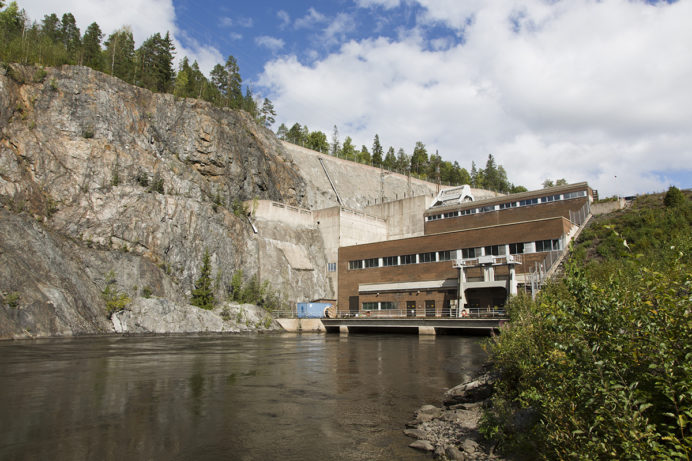
An improved turbine regulator has been commissioned at the Melo hydropower plant on the Kokemäenjoki river. It enables more precise control of electricity production, as well as protects the equipment. The improved regulator is a continuation of a development project with the University of Oulu a couple of years ago.
In 2017–2020, experts from Pohjolan Voima’s hydropower company PVO-Vesivoima and István Selek and Joni Vasara, researchers from the University of Oulu, developed a completely new type of turbine regulator. Now a new, improved version is being commissioned. The first new regulator will be commissioned at the Haapakoski rapids on the Iijoki river. Next year, regulators will also be installed in the Iijoki power plants and the Isohaara power plant on the Kemijoki river.
The impetus for the further development was that the transmission system operator Fingrid would introduce new criteria for power plants in 2022 to participate in the “reserve market” on the electricity market. PVO-Vesivoima participated in a pilot project to test how the balancing of power plants met the new criteria.
“We tested the balancing at the Raasakka power plant. It turned out that the turbine regulator still needed improvements,” says Tommi Hansen-Haug, PVO-Vesivoima’s automation specialist.
The new regulator seems to protect the turbine
The development of a new version of a turbine regulator that had been in use at the Iijoki power plants for a couple of years was started.
”We didn’t leave much of the old one left. In practice, we completely redesigned the regulator. The mathematical modelling of the plants that is used as the basis for the new ATG 22 regulator is much simpler and lighter than before. This means that less computing power is required. We have also improved many features,” Hansen-Haug describes the changes.
When the first version of the turbine regulator was being commissioned, the assumption was that the turbine could experience wear and tear faster than before. According to the measurements, this assumption does not seem to hold true.
“I’ve compared how the old regulator controlled the machine, meaning how often it made open-close reversals, and how much it moved the machine, for example. The difference is several dozen percent in favour of the new regulator.”
Installation at the Iijoki plants and Isohaara in 2022
PVO-Vesivoima has a total of 18 production units in its hydropower plants. The previous version of the turbine regulator had been commissioned in 11 of them. New regulators will be gradually installed at the Iijoki plants and the new Isohaara plant on the Kemijoki river during 2022.
The installation takes time, as each power plant is unique. The regulator cannot be copied as such from one plant to another; instead, it must be tested separately at each plant, on each machine, and the parameters must be adjusted. The commissioning process involves several days of work on each machine.
“The settings are fine-tuned to ensure that the regulator optimally controls the machine in question.”
To make matters even more complicated, the plants use automation systems from two different suppliers.
“We’ve worked hard to translate the code of one supplier to the programming language used by the other.”